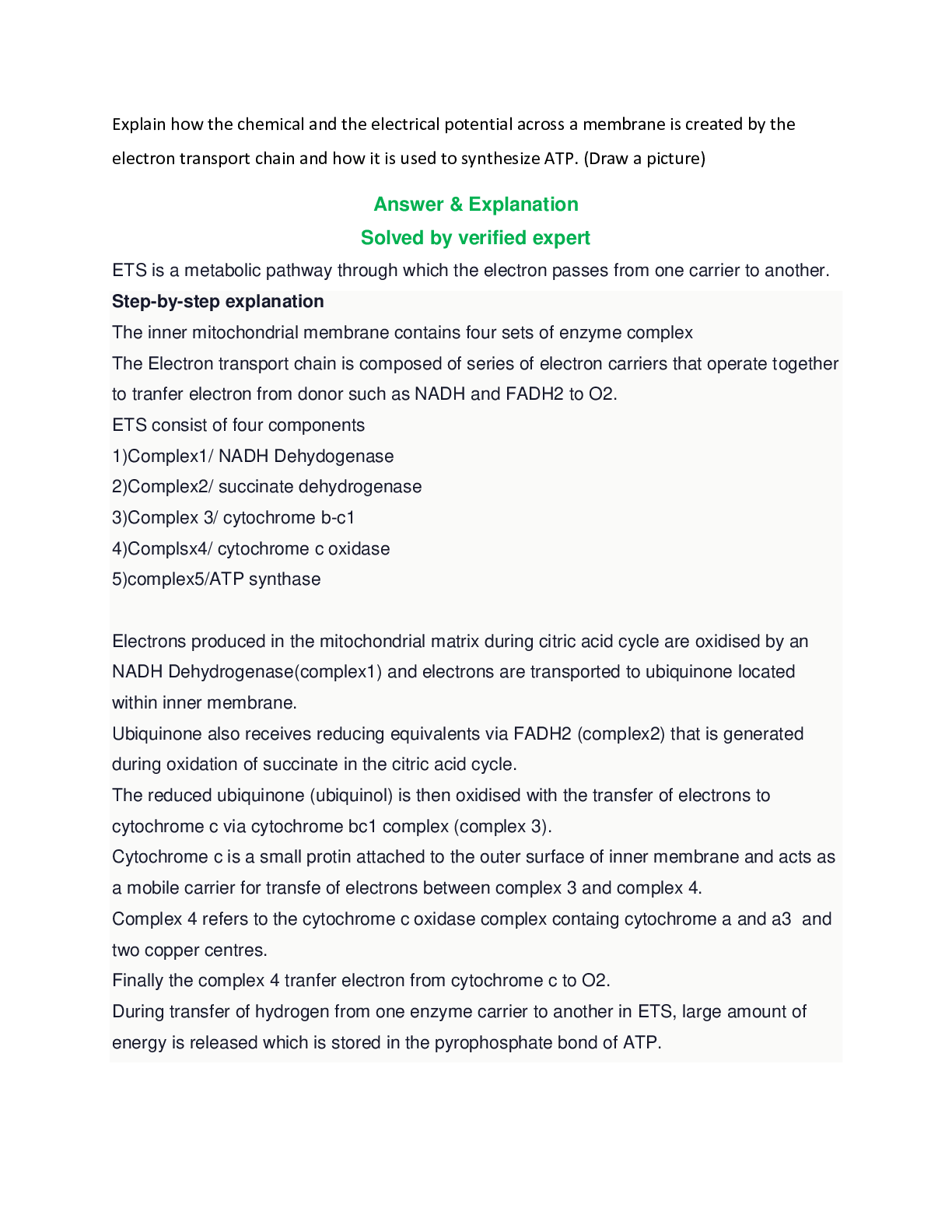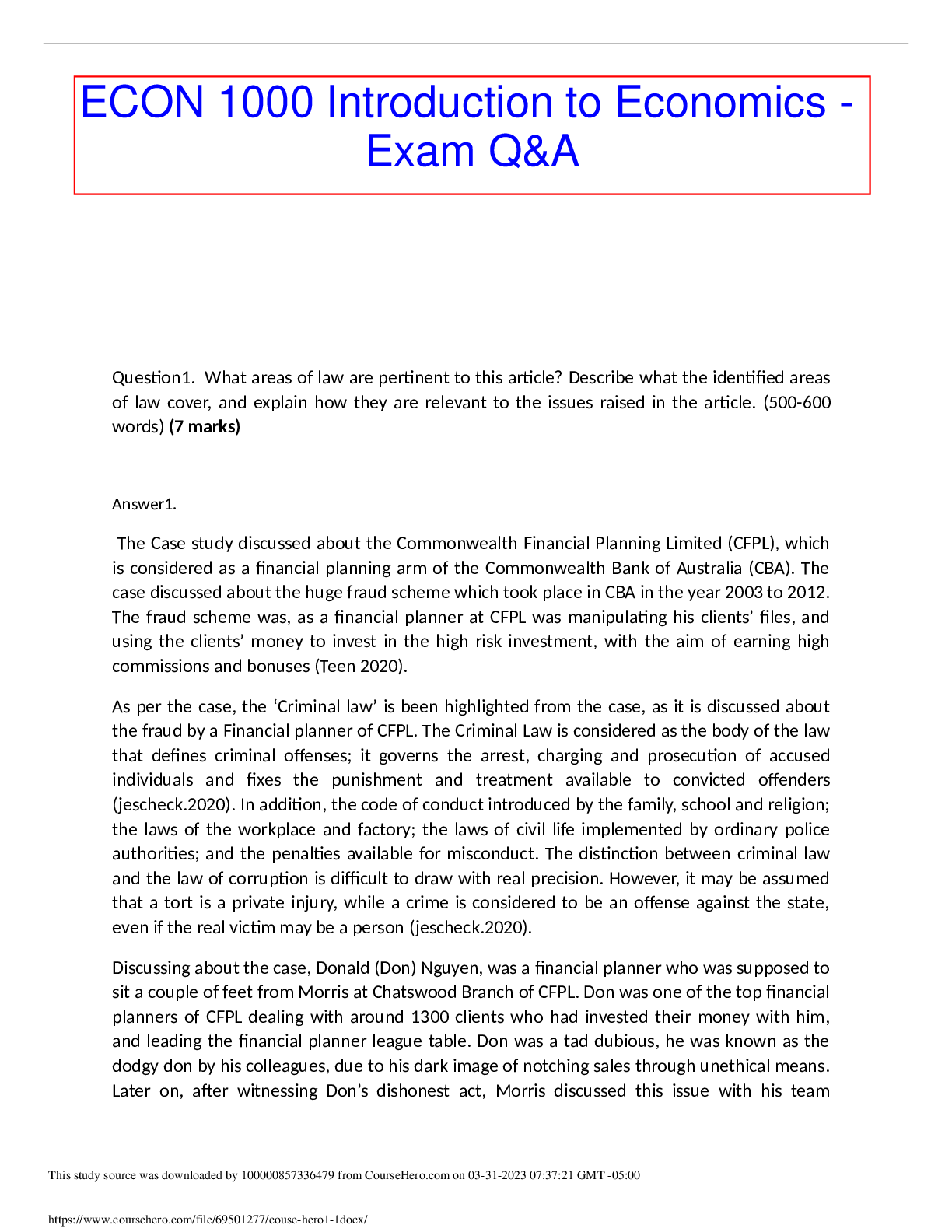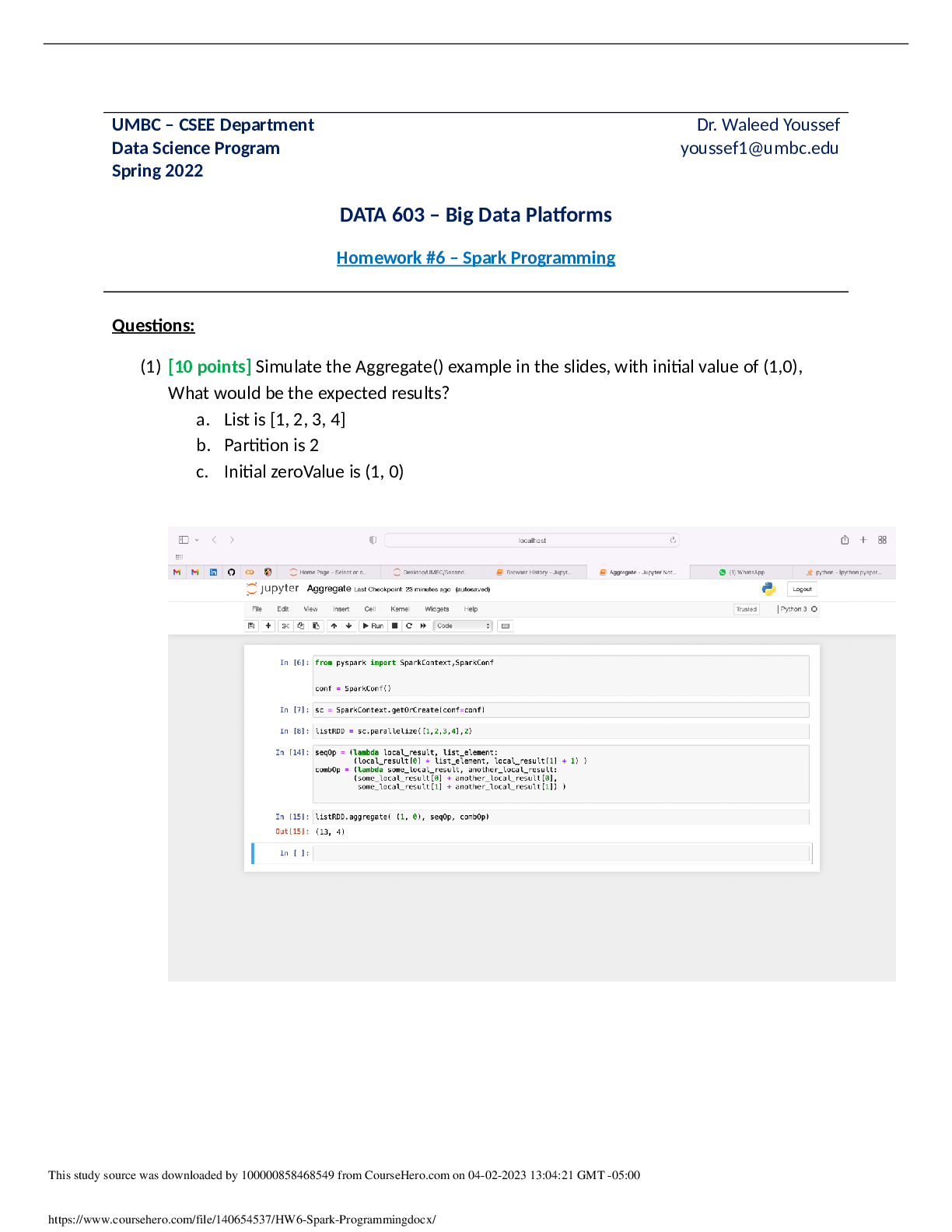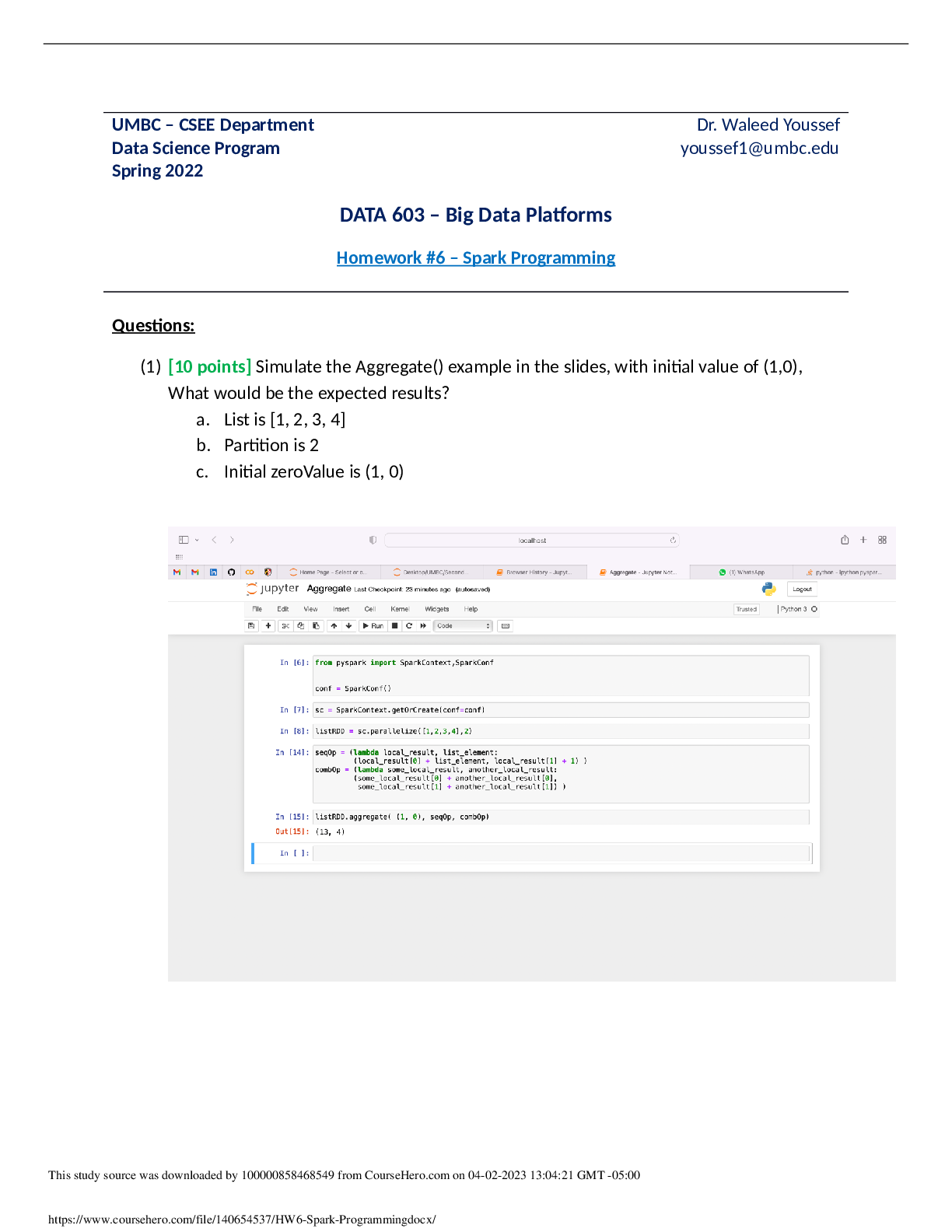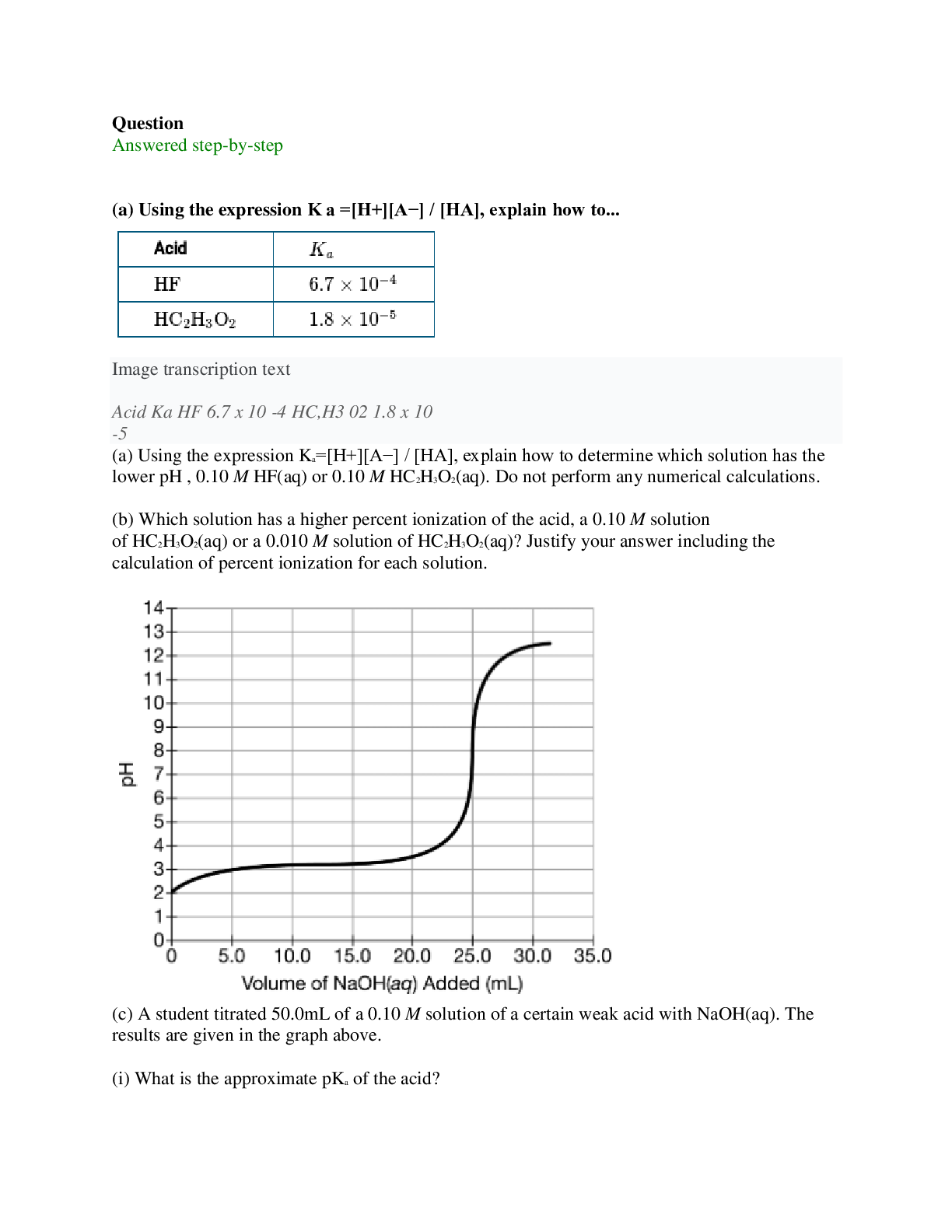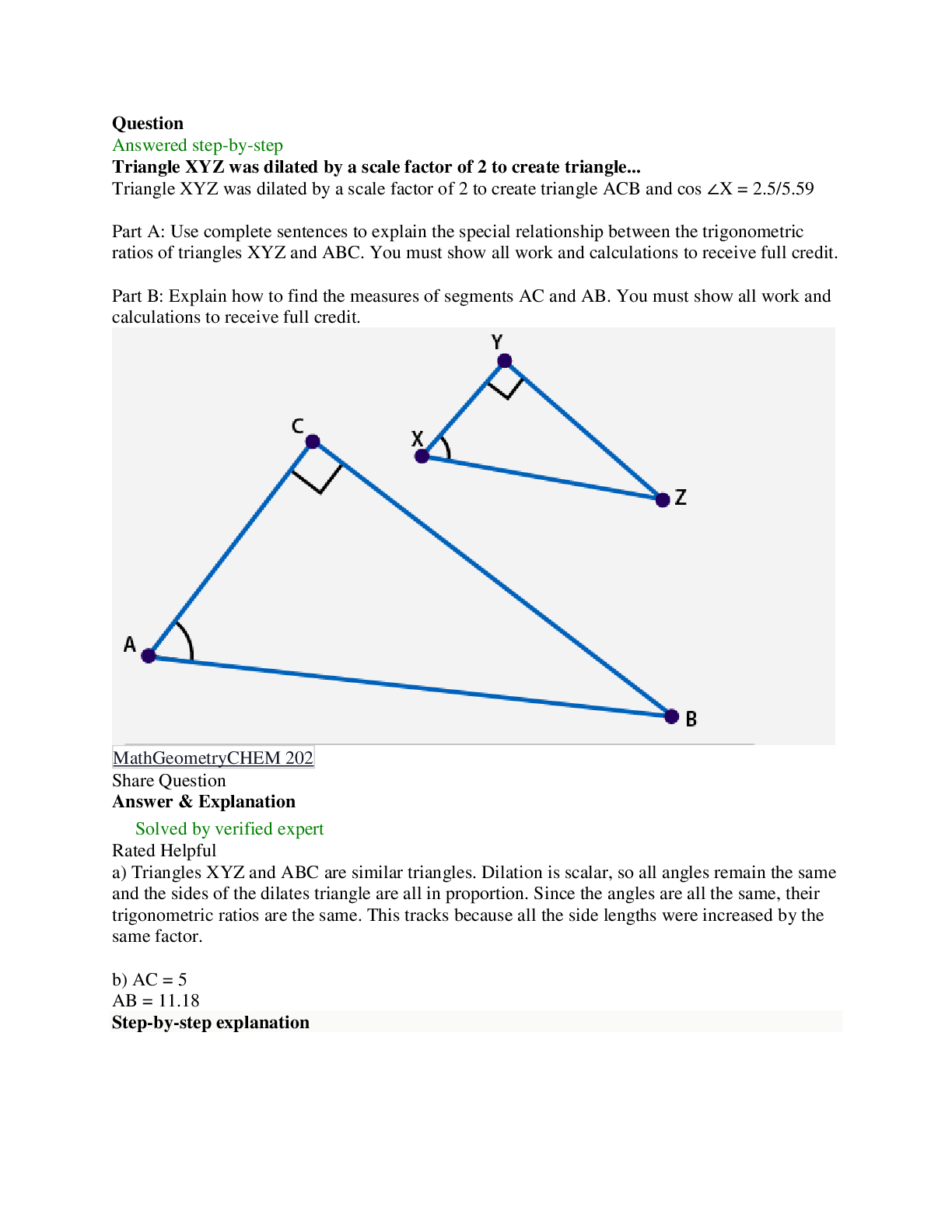Programming > QUESTIONS & ANSWERS > DATA 603 – Big Data Platforms Homework #9 – Spark SQL _ Explain how SQL is applied to a typical (All)
DATA 603 – Big Data Platforms Homework #9 – Spark SQL _ Explain how SQL is applied to a typical RDD? What components are needed to perform this task?
Document Content and Description Below
DATA 603 – Big Data Platforms Homework #9 – Spark SQL (1) [10 Points] Explain how SQL is applied to a typical RDD? What components are needed to perform this task? Ans) Spark SQL integrates a... processing like the processing of relational databases with Spark’s functional programming. It provides support for various data sources and makes it possible to weave SQL queries with code transformations thus resulting in a very powerful tool and hence blurs the gap between RDD and relational table. It also provides higher optimization. Spark SQL transforms RDDs into SQL using a special type of RDD called SchemaRDD. It is essentially a RDD with schema. As it contains schema, run relation queries can be run on the data along with basic RDD functions. The SchemaRDD can be registered as a table so that SQL queries can be executed on it using Spark SQL.A schemaRDD is made up of Object data which refers to the data stored in RDD and schema which describes the data types of the objects. Spark SQL supports two different methods for converting existing RDDs into SchemaRDDs. The first method uses reflection to infer the schema of an RDD that contains specific types of objects. This reflection-based approach leads to more concise code and works well when the schema is known at the time of creating the Spark application. For example, in case of the application being written in Python environment Spark SQL can convert an RDD of Row objects to a SchemaRDD, inferring the datatypes. Rows are constructed by passing a list of key/value pairs as kwargs to the Row class. The keys of this list define the column names of the table, and the types are inferred by looking at the first row. The second method for creating SchemaRDDs is through a programmatic interface that allows you to construct a schema and then apply it to an existing RDD. While this method is more verbose, it allows you to construct SchemaRDDs when the columns and their types are not known until runtime. In case of Python environment, a SchemaRDD can be created programmatically with three steps. [Show More]
Last updated: 1 year ago
Preview 1 out of 12 pages
Instant download

Buy this document to get the full access instantly
Instant Download Access after purchase
Add to cartInstant download
Reviews( 0 )
Document information
Connected school, study & course
About the document
Uploaded On
Apr 25, 2023
Number of pages
12
Written in
Additional information
This document has been written for:
Uploaded
Apr 25, 2023
Downloads
0
Views
50

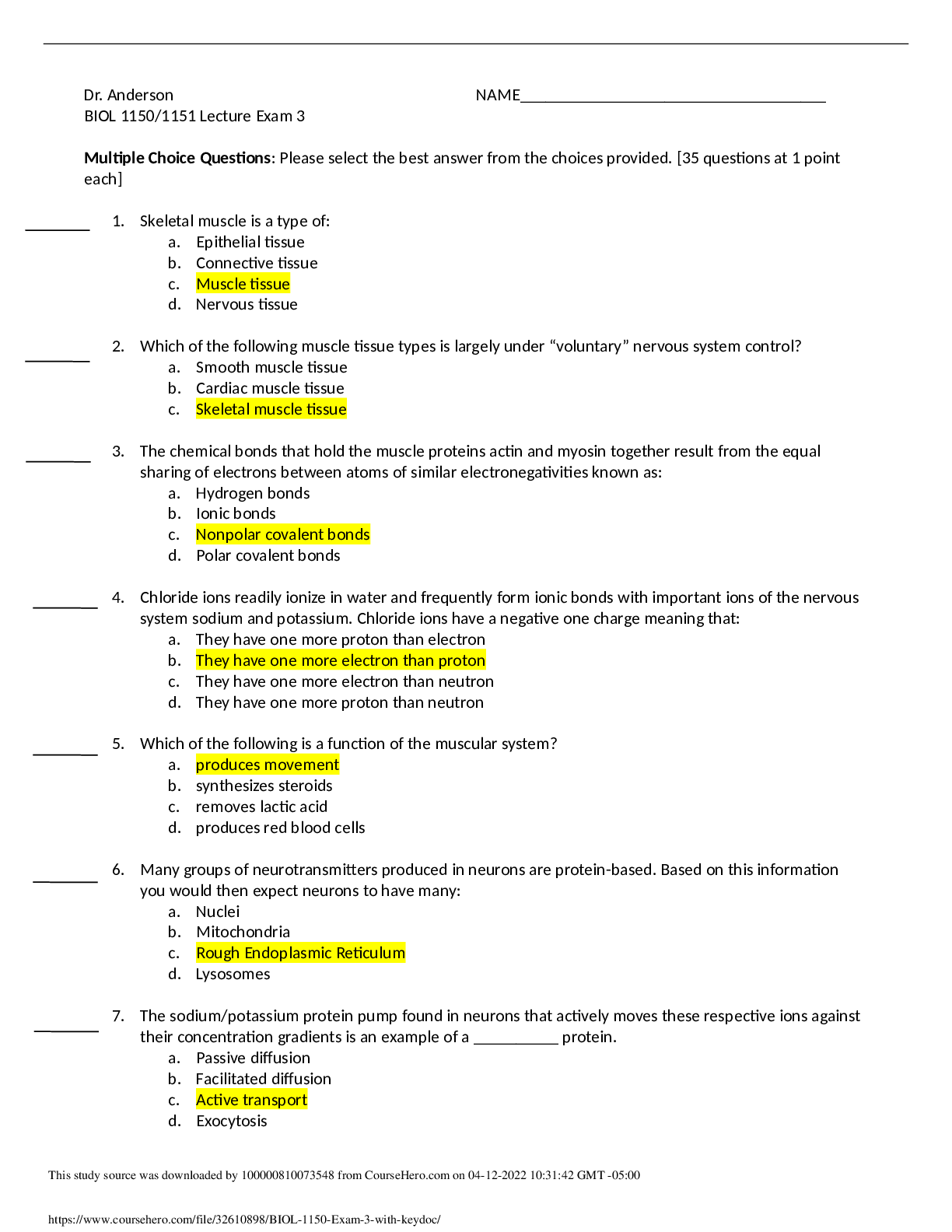
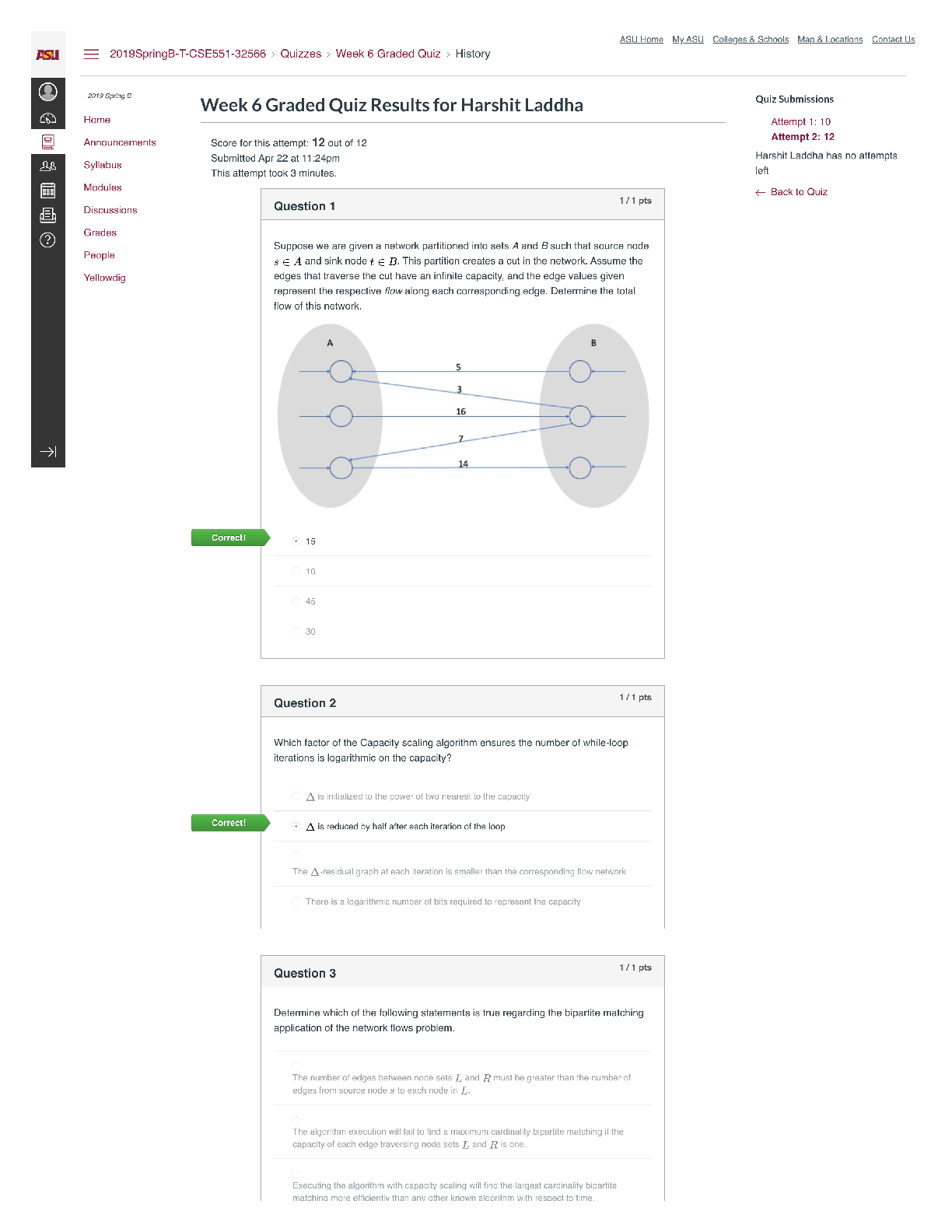

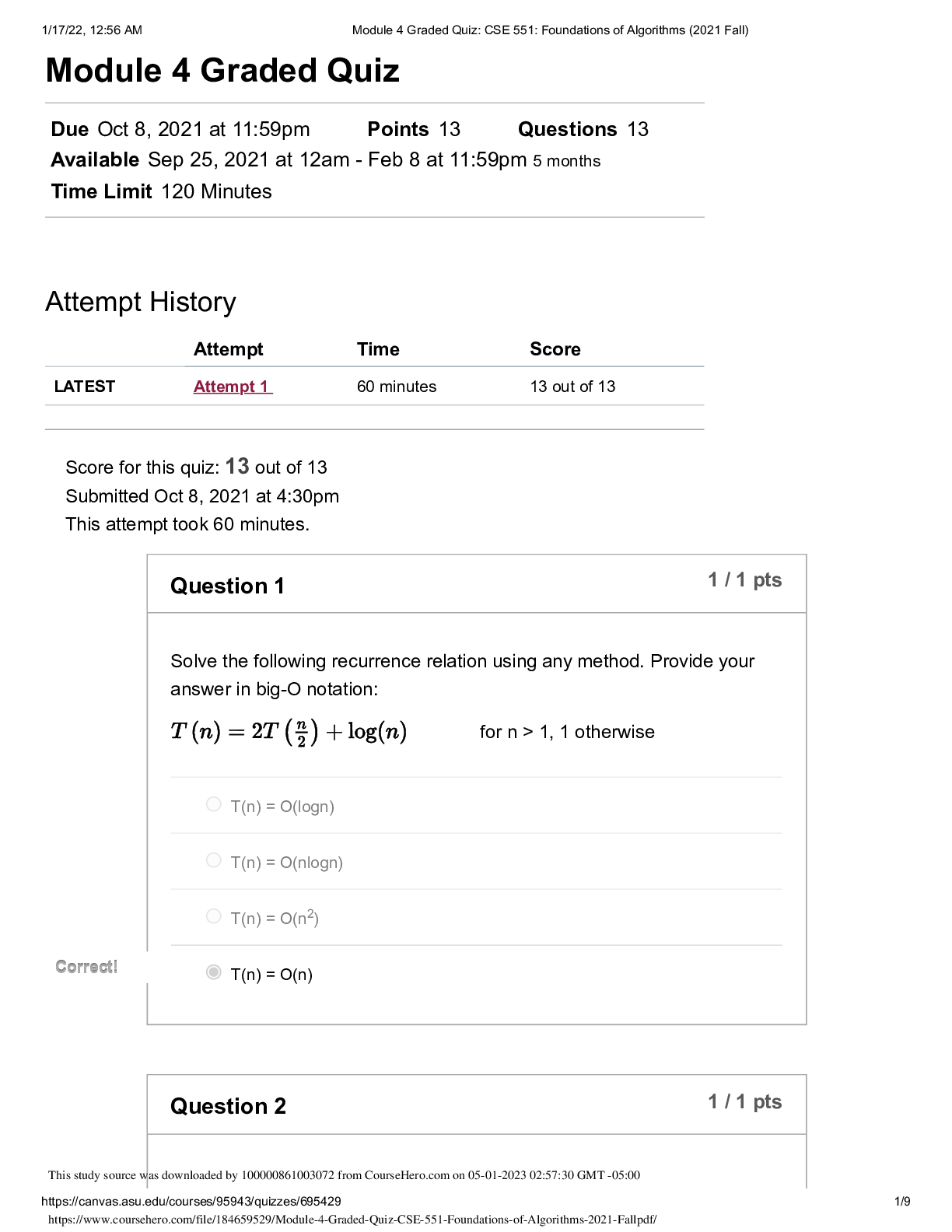
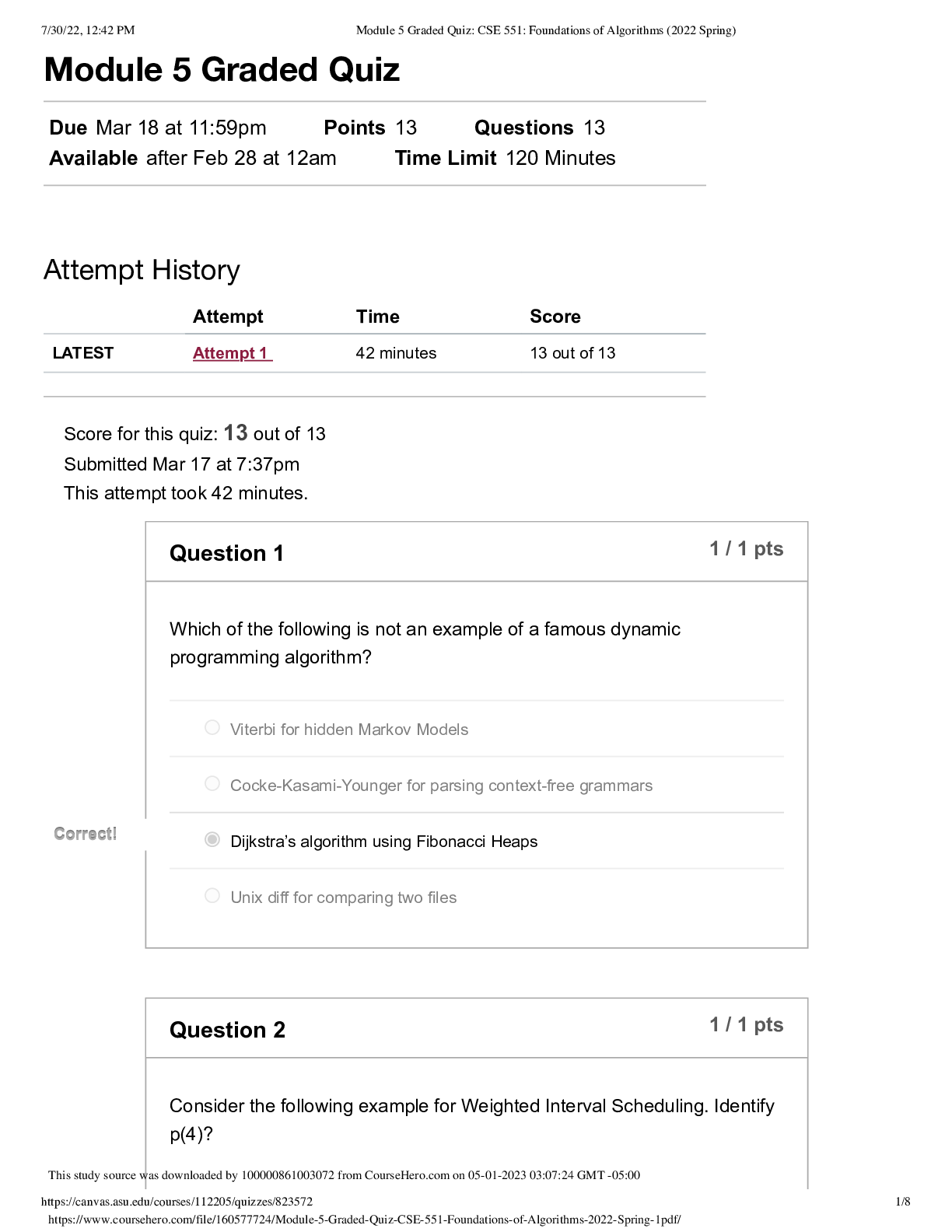
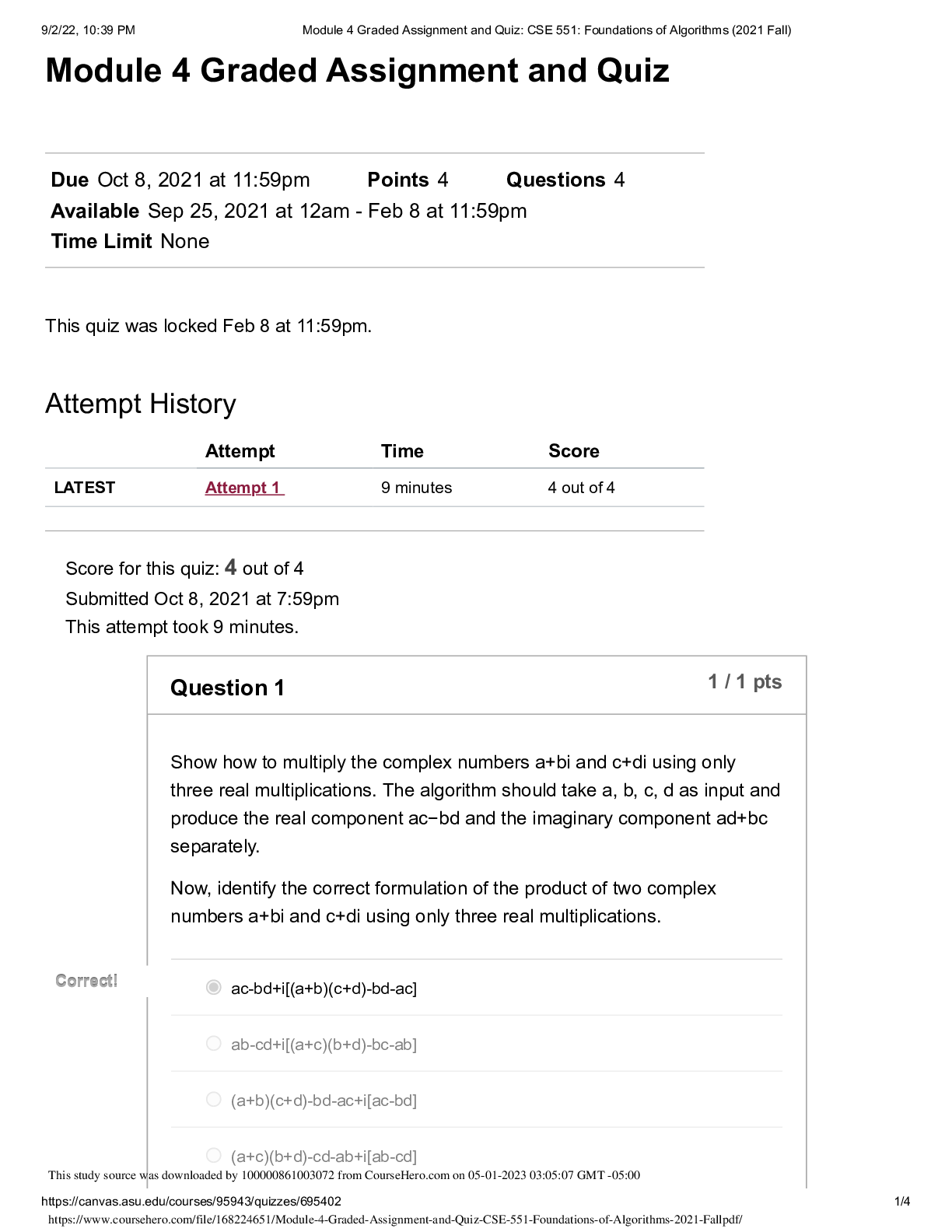
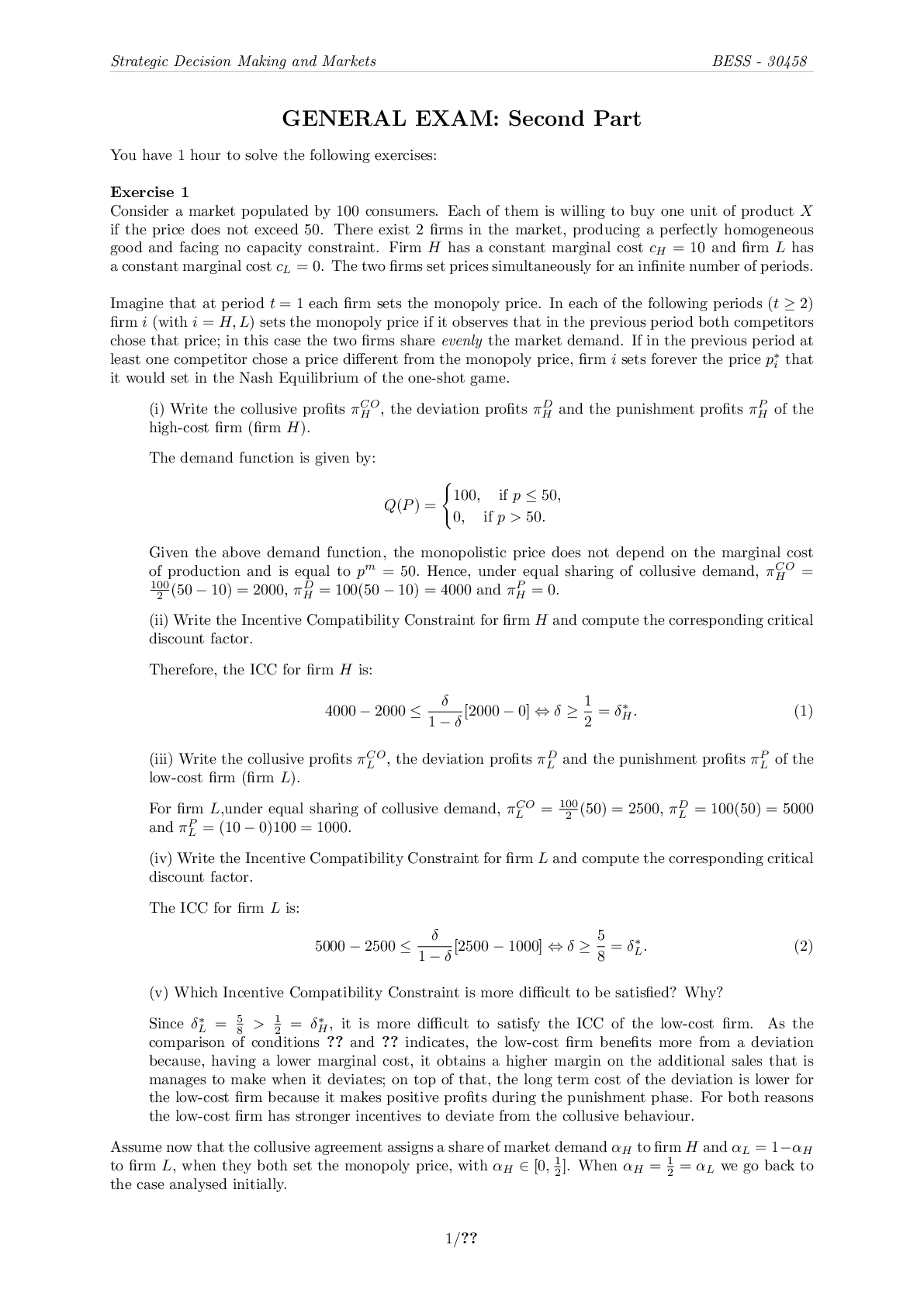



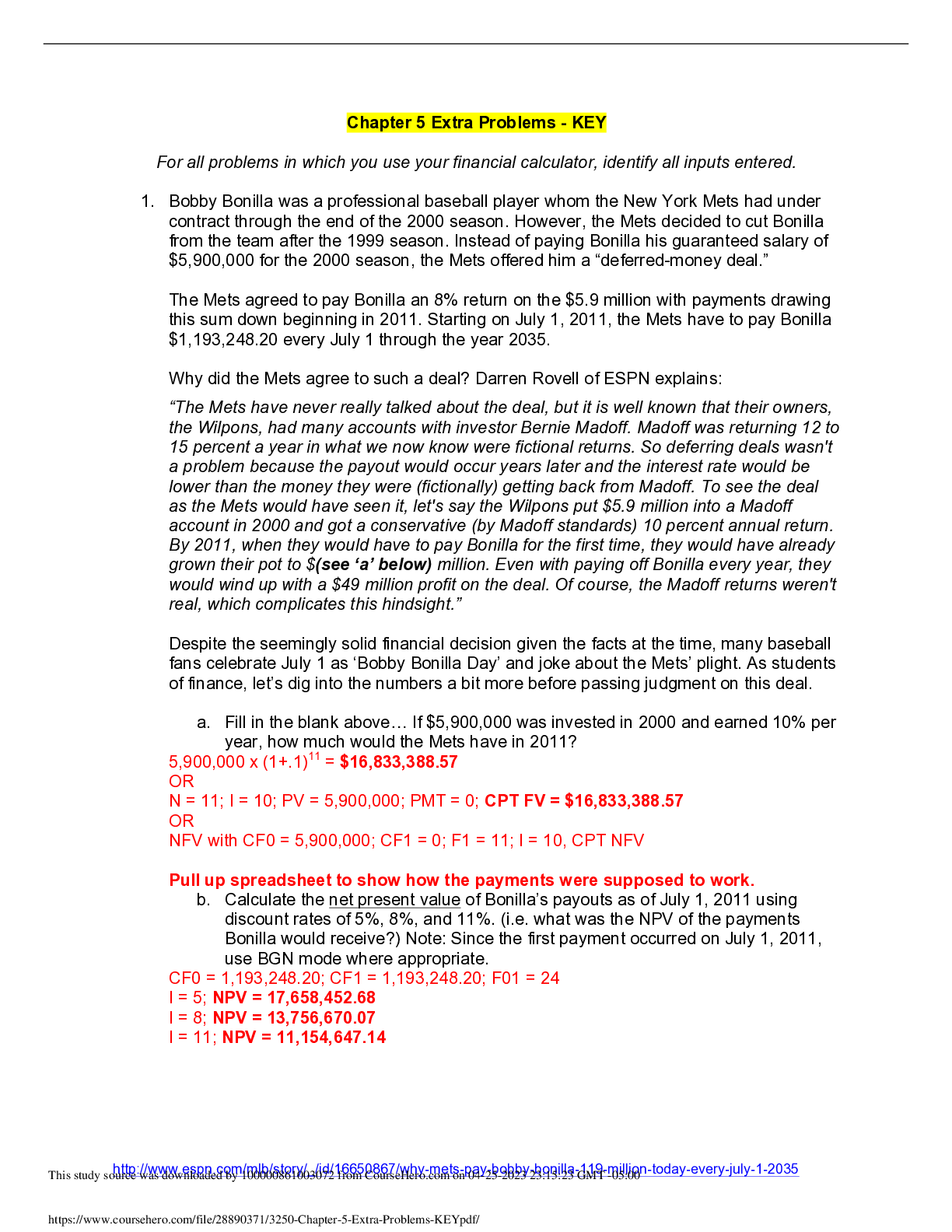


.png)
